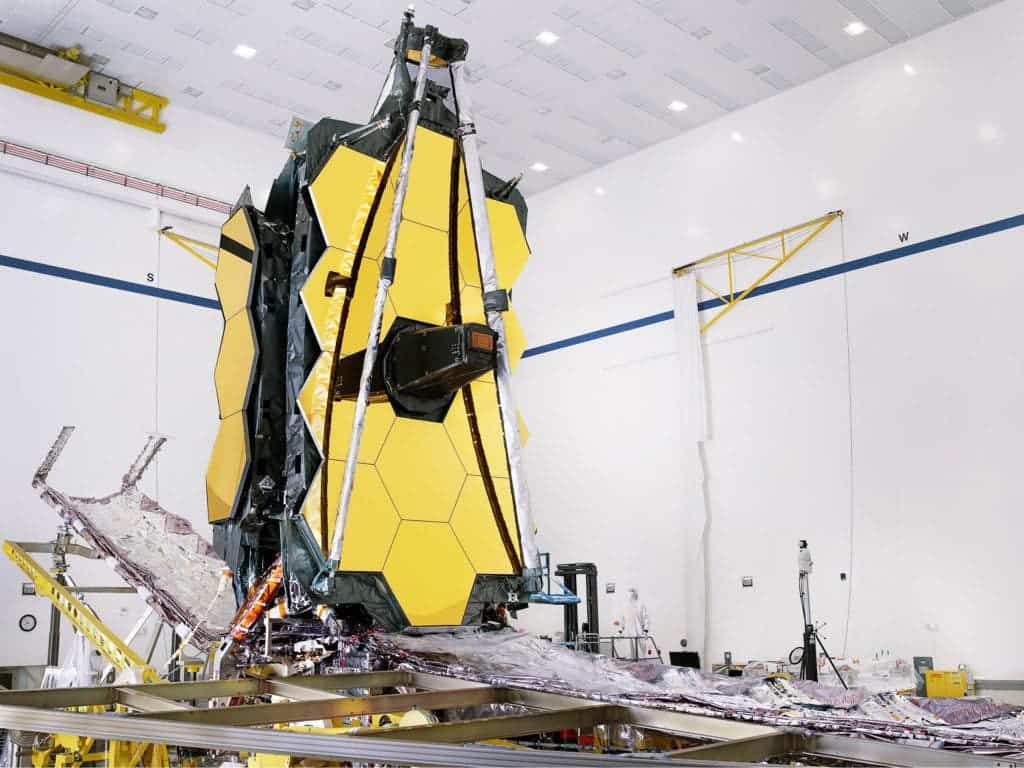Engineers at the NASA have put together the two halves of the Webb telescope.

The team has successfully put together the Webb telescope proper (the part of the craft which includes the mirrors and science instruments) with the rest of the spacecraft and its sunshield. The next step is to connect and test all the electronics on the different parts.
James Webb, assembled
“The assembly of the telescope and its scientific instruments, sunshield and the spacecraft into one observatory represents an incredible achievement by the entire Webb team,” said Bill Ochs, Webb project manager at the NASA Goddard Space Flight Center in Greenbelt, Maryland.
The James Webb telescope is the product of 20 years’ work from thousands of individuals across NASA, the European Space Agency, the Canadian Space Agency, Northrop Grumman, and other industrial and academic bodies.
Yesterday, the team used a crane to slowly and gently guide the telescope into place while ensuring that all points of contact were properly aligned and seated.
Next, they’re going to fully-deploy the craft’s intricate, five-layer sunshield. This sunshield is designed to keep Webb’s mirrors and scientific instruments cold by blocking infrared light from the Earth, moon, or sun.
All of the craft’s main components have been tested individually through all of the environments they would encounter during the mission: a rocket ride and orbiting mission a million miles away from Earth. Now that Webb is a fully assembled observatory, it will go through additional environmental and deployment testing to ensure mission success.
Since the mission hinges on the heat shield being able to deploy — and deploy in the correct shape — NASA wants to test its functionality on the assembled craft as quickly as possible.
“This is an exciting time to now see all Webb’s parts finally joined together into a single observatory for the very first time,” said Gregory Robinson, the Webb program director at NASA Headquarters in Washington, D.C.
“The engineering team has accomplished a huge step forward and soon we will be able to see incredible new views of our amazing universe.”
The James Webb spacecraft is scheduled to launch in 2021, when it will become the world’s most powerful space science observatory.






